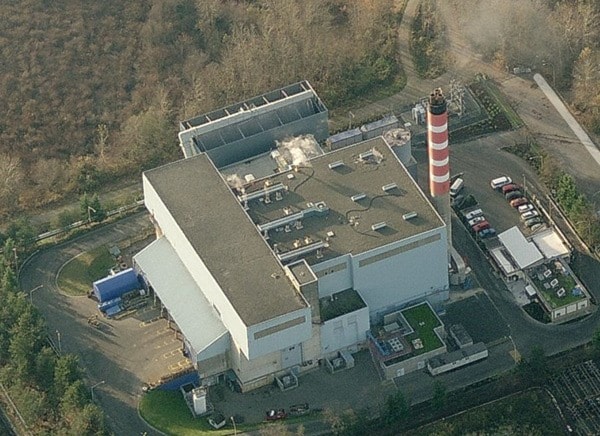Fraser Health says more work is needed to determine whether an incinerator in Burnaby poses any health risks to Fraser Valley residents.
Metro Vancouver has asked the provincial Ministry of Environment to issue a new operational certificate (OC) for its trash-burning incinerator, a facility the Fraser Valley Regional District (FVRD) has repeatedly voiced concerns about.
Consultations and debate about the new OC has been raging since December 2013, when the FVRD said the facility should have to abide by stricter emissions limits in order to keep operating.
The OC has been revised several times since then, with the FVRD repeatedly asking for more monitoring of pollution. The regional district says the funnel-like shape of the Fraser Valley, along with the high mountains, conspire to trap emissions from Metro Vancouver, fouling the region’s air.
Concerns about the incinerator were heightened in June, when the regional district learned that another incinerator run by the same company in Ontario had failed emissions tests, with toxic substances emitted at rates 12 times that allowed.
Ken Shaw, Fraser Health’s manager of environmental health, said tests of the Burnaby incinerator have thus far shown emissions to be far lower than limits. Only nitrous oxide and sulfide oxide levels are close to approaching the certificate’s limits, he said, and in both of those cases, emissions remain well below those allowed by the OC.
Still, in order to fully assess the incinerator’s effects on public health, Shaw said Fraser Health wants more data. In particular, the health authority (which is not administered by or connected to the FVRD) wants “comprehensive site-specific air dispersion modeling” conducted to determine where those compounds being released by the incinerators end up.
Those results would inform a subsequent “comprehensive public health risk assessment,” recommended by Fraser Health.
Shaw said the health authority also wants to ensure that air being tested at the incinerator reflects the breadth of its operations. The FVRD has said that tests should be conducted not just while the incinerator is running at optimal efficiency, but during start-up and other times when more emissions may be released.
“How representative and adequate the sampling is, is still under discussion,” Shaw said.
FVRD co-chair, and Abbotsford councillor, Patricia Ross has been among the most outspoken of those voicing concern about the incinerator.
Ross told The News via email that Fraser Health “clearly backed us up in our request for better oversight and measuring of pollutants and health effects” at the incinerator.
She said the results from the Ontario incinerator underscore the need for more analysis of health risks associated with both the Burnaby facility and the now-shelved plans for a new trash-burning incinerator.
“This is something we have been calling for, for quite some time,” she said. “We are very appreciative that Fraser Health has spoken up to protect the health of people in the Lower Mainland whose health is at risk from these pollutants.”
In a statement provided to The News after press deadline, a provincial Ministry of Enviornment spokesperson wrote: "Submissions from Fraser Health as well as other stakeholders were received as part of the consultation and public notification process and those submissions are currently being considered by the Statutory Decision maker."
The statement said "the issuance of the Operational Certificate will result in additional and more stringent requirements above and beyond the current regulatory requirements and should result in increased protection of human health and the environment.
"Once issued, the OC may be amended at any time in the future should it be necessary for improved protection of the environment or to implement continuous improvement and technological advances."
